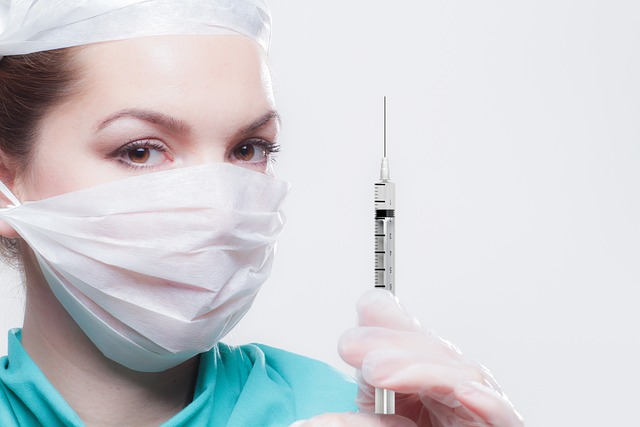Knee pain is a common and often debilitating condition that affects millions of people worldwide. Whether due to injury, arthritis, or degenerative joint disease, knee pain can significantly impact a person’s quality of life, limiting mobility and causing chronic discomfort. Traditional treatments for knee pain have ranged from physical therapy and medications to invasive surgeries. However, in recent years, Platelet-Rich Plasma (PRP) therapy has emerged as a groundbreaking alternative that promises effective and long-lasting relief. This article explores ten compelling reasons why PRP is revolutionizing knee pain management.

Table of Contents
Toggle1. Natural Healing Properties of PRP
PRP therapy harnesses the body’s own healing mechanisms to repair and regenerate damaged tissues. PRP is derived from the patient’s blood, which is processed to concentrate platelets, growth factors, and other healing components. When injected into the knee, these elements stimulate the body’s natural healing processes. This approach reduces the need for synthetic drugs and minimizes the risk of adverse reactions.
Mechanism of Action
Platelets play a crucial role in the body’s repair system. They contain growth factors and cytokines that promote cell proliferation, tissue regeneration, and angiogenesis (formation of new blood vessels). When PRP is injected into the knee, these growth factors initiate a cascade of biological events that accelerate tissue healing and reduce inflammation.
Clinical Evidence
Numerous studies have demonstrated the effectiveness of PRP in treating knee pain. A review published in the American Journal of Sports Medicine highlighted that patients with knee osteoarthritis who received PRP injections experienced significant improvements in pain and function compared to those who received hyaluronic acid or saline injections.
2. Minimally Invasive Procedure
PRP therapy is a minimally invasive procedure that involves drawing a small amount of the patient’s blood, processing it to concentrate the platelets, and then injecting the PRP into the knee joint. This process is typically completed in a single outpatient visit, with minimal downtime required.
Procedure Steps
- Blood Collection: A small sample of the patient’s blood is drawn, usually from the arm.
- Centrifugation: The blood sample is placed in a centrifuge to separate the platelets and plasma from the red and white blood cells.
- PRP Preparation: The concentrated platelets and plasma are collected to form the PRP.
- Injection: The PRP is injected into the knee joint under ultrasound guidance to ensure precise delivery to the affected area.
Benefits of Minimally Invasive Treatment
Compared to surgical options, PRP therapy offers several advantages:
- Reduced Risk: Lower risk of complications such as infection and blood clots.
- Quick Recovery: Patients typically resume normal activities within a few days.
- No General Anesthesia: The procedure is performed under local anesthesia, reducing the risks associated with general anesthesia.
3. Effective for Various Knee Conditions
PRP therapy has shown promise in treating a wide range of knee conditions, from acute injuries to chronic degenerative diseases.
Osteoarthritis
Osteoarthritis (OA) is a common cause of knee pain, characterized by the gradual breakdown of cartilage. PRP injections can help slow down the progression of OA and provide pain relief by stimulating cartilage repair and reducing inflammation.
Tendon and Ligament Injuries
PRP is effective in treating tendonitis and ligament sprains or tears. It promotes faster healing of tendons and ligaments by enhancing collagen production and reducing inflammation.
Meniscal Injuries
Meniscal tears are common knee injuries, especially among athletes. PRP therapy can aid in the healing of meniscal injuries by promoting tissue regeneration and reducing pain and swelling.
4. Reduction in Pain and Inflammation
One of the most significant benefits of PRP therapy is its ability to reduce pain and inflammation in the knee joint.
Anti-Inflammatory Effects
PRP contains anti-inflammatory cytokines that help reduce inflammation in the knee joint. This reduction in inflammation leads to decreased pain and improved joint function.
Pain Relief Mechanism
The growth factors in PRP promote the repair of damaged tissues, which helps alleviate pain. Additionally, PRP can inhibit the production of substances that contribute to pain, providing both immediate and long-term relief.
Patient Outcomes
Clinical studies have shown that PRP therapy can lead to substantial pain reduction in patients with knee osteoarthritis and other knee conditions. For example, a study published in the Journal of Arthroscopy and Related Surgery found that PRP injections significantly reduced pain and improved function in patients with knee osteoarthritis.
5. Enhanced Mobility and Function
Improving knee function and mobility is a primary goal of PRP therapy. Patients often experience enhanced joint function and a greater range of motion following treatment.
Cartilage Regeneration
PRP stimulates the regeneration of cartilage, which is crucial for joint function. Healthy cartilage ensures smooth movement of the knee joint and reduces friction.
Strengthening of Supporting Structures
PRP promotes the healing of tendons, ligaments, and other supporting structures in the knee. Strengthening these structures enhances joint stability and function.
Case Studies
Several case studies have reported improved mobility and function in patients undergoing PRP therapy for knee pain. For instance, a study in the Clinical Journal of Sport Medicine reported that athletes with knee injuries treated with PRP were able to return to their sports more quickly and with better functional outcomes compared to traditional treatments.
6. Long-Lasting Results
Unlike temporary pain relief methods such as corticosteroid injections, PRP therapy offers long-lasting results by addressing the underlying causes of knee pain.
Sustained Benefits
Patients receiving PRP therapy often report sustained pain relief and improved function for several months to years following treatment. This longevity is due to the regenerative effects of PRP on damaged tissues.
Comparative Studies
Studies comparing PRP to other treatments, such as hyaluronic acid injections, have shown that PRP provides more durable pain relief and functional improvement. A meta-analysis published in the Journal of Orthopaedic Surgery and Research concluded that PRP is more effective than hyaluronic acid in reducing pain and improving function in patients with knee osteoarthritis.
7. Reduced Need for Surgery
By providing effective pain relief and promoting tissue healing, PRP therapy can reduce the need for surgical interventions such as knee arthroscopy or total knee replacement.
Avoiding Invasive Procedures
For many patients, PRP therapy can serve as a viable alternative to surgery, especially for those who are not good candidates for surgery due to age, health conditions, or personal preferences.
Cost-Effectiveness
Avoiding surgery not only reduces the physical and emotional burden on patients but also lowers healthcare costs. PRP therapy is generally less expensive than surgical options and associated postoperative care.
Success Stories
There are numerous success stories of patients who have avoided knee surgery through PRP therapy. These stories highlight the potential of PRP to transform knee pain management and provide lasting relief without the need for invasive procedures.
8. Personalized Treatment
PRP therapy can be tailored to meet the specific needs of each patient. This personalized approach ensures optimal results for different types and severities of knee conditions.
Customizable Protocols
The concentration of platelets and the volume of PRP injected can be adjusted based on the patient’s condition and response to treatment. This customization enhances the effectiveness of the therapy.
Patient-Centric Care
PRP therapy allows for a more patient-centric approach, taking into account the individual’s medical history, lifestyle, and treatment goals. This personalized care contributes to higher patient satisfaction and better outcomes.
Examples of Personalized Care
For example, athletes may receive a different PRP treatment protocol compared to elderly patients with osteoarthritis, ensuring that each patient receives the most appropriate and effective care for their specific needs.
9. Safety and Minimal Side Effects
PRP therapy is considered safe and has minimal side effects, especially when compared to other treatments like corticosteroids or surgery.
Autologous Nature
Since PRP is derived from the patient’s own blood, the risk of allergic reactions or immune responses is virtually eliminated. This autologous nature of PRP makes it a safe option for most patients.
Minimal Adverse Effects
The most common side effects of PRP therapy are mild and temporary, such as pain at the injection site, swelling, and bruising. These side effects usually resolve within a few days.
Clinical Safety Data
Clinical studies have consistently shown that PRP therapy has a low incidence of adverse effects. A review in the Journal of Orthopaedic Research reported that PRP injections are generally well-tolerated and have a favorable safety profile.
10. Innovative and Evolving Field
PRP therapy represents an innovative and rapidly evolving field in medical science. Ongoing research and technological advancements continue to enhance the efficacy and applications of PRP in knee pain management.
Emerging Technologies
New technologies, such as advanced centrifugation techniques and enhanced PRP formulations, are being developed to improve the quality and potency of PRP. These innovations promise even better outcomes for patients.
Expanding Applications
Research is expanding the potential applications of PRP beyond knee pain to include other musculoskeletal conditions, such as hip and shoulder pain, as well as non-musculoskeletal conditions like skin rejuvenation and hair restoration.
Future Directions
The future of PRP therapy in knee pain management looks promising, with ongoing clinical trials and studies exploring new protocols, combination therapies, and long-term benefits. This continuous evolution ensures that PRP will remain at the forefront of regenerative medicine.
Conclusion
Platelet-Rich Plasma (PRP) therapy is revolutionizing knee pain management by offering a natural, minimally invasive, and effective treatment option for various knee conditions. Its ability to harness the body’s healing mechanisms, reduce pain and inflammation, improve mobility, and provide long-lasting results makes it a compelling choice for patients seeking relief from knee pain. As the field of PRP therapy continues to evolve, it holds the promise of transforming not only knee pain management but also the broader landscape of regenerative medicine.
Optimize Your Health with Advanced Platelet-Rich Plasma (PRP) Knee Treatment in Tempe, Arizona
At The Strength Doctor, we are at the forefront of healthcare innovations, leveraging your body’s natural healing processes to treat knee issues. Our focus? Advanced Platelet-Rich Plasma (PRP) Knee Treatment, a cutting-edge solution providing a non-invasive method to alleviate pain and promote healing. Imagine utilizing your body’s own healing agents to refine your treatment strategy, improve joint health, and prevent further knee damage—all without invasive surgeries. That’s the advantage of our sophisticated PRP therapy.
Our commitment to your health is enhanced by Dr. Clark’s personalized care, which includes medical marijuana certifications to ensure it aligns perfectly with your health objectives. Alongside our advanced PRP treatments, we provide a comprehensive view of your body’s internal healing environment, empowering you to make informed decisions about your knee health. Our services are designed to meet the highest standards of quality and safety, reflecting our dedication to your well-being.
Transform your health goals into reality with our specialized services. Contact us today to schedule your appointment. Start your journey to a healthier, more informed life with The Strength Doctor!
Disclaimer
The materials available on this website are for informational and entertainment purposes only and not to provide medical or legal advice. You should contact your physician and/or attorney to obtain advice concerning any particular issue or problem. You should not act or refrain from acting based on any content included in this site without seeking legal or other professional medical advice. The information presented on this website may not reflect the most current legal or medical developments. No action should be taken in reliance on the information contained on this website and we disclaim all liability concerning actions taken or not taken based on any or all of the contents of this site to the fullest extent permitted by law.
